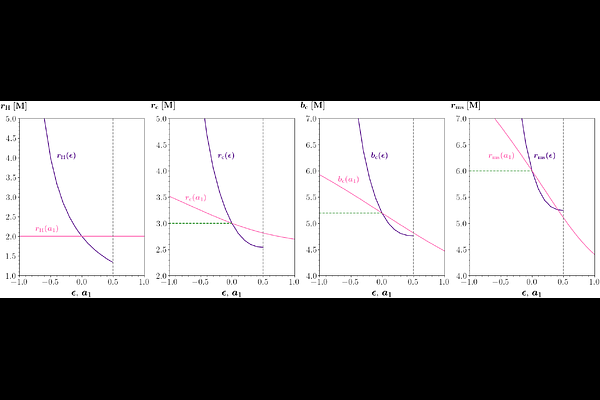Gravity versus astrophysics in black hole images and photon rings: equatorial emissions and spherically symmetric spacetimes

Gravity versus astrophysics in black hole images and photon rings: equatorial emissions and spherically symmetric spacetimes
I. Urso, F. H. Vincent, M. Wielgus, T. Paumard, G. Perrin
AbstractThe EHT collaboration released in 2019 the first horizon-scale images of a black hole accretion flow, opening a novel route for plasma physics comprehension and gravitational tests. Although the present unresolved images deeply depend on the astrophysical properties of the accreted matter, GR predicts that they contain highly lensed observables, the "photon rings", embodying the effects of strong-field gravity. Focusing on the supermassive black hole M87* and adopting a geometrically thin, equatorial disc as a phenomenological configuration for the accreting matter, our goal is to study the degeneracy of spacetime curvature and of physically-motivated emission processes on EHT-like images observed at 230 and 345 GHz. In a parametric framework, we simulate adaptively ray-traced images using GYOTO in various spherically-symmetric spacetime geometries, for a comprehensive class of disc velocities and realistic synchrotron emission profiles. We then extract the width and the peak position of 1D intensity cross sections on the direct image and the first photon ring. We show that, among the investigated quantities, the most appropriate observables to probe the geometry are the peak positions of the first photon ring. Small geometric deviations can be unequivocally detected, regardless of the motion of the disc, ranging from a Keplerian to a radially infalling one, if the black hole mass-to-distance estimate is accurate up to around 2%; the current uncertainty of 11% being sufficient just to access extreme deviations. The equatorial set-up of this paper, favoured by present EHT observations of M87*, is adapted to model future measurements at higher observing frequencies, where absorption effects are negligible, and with higher resolution, indispensable to resolve the photon rings. Additional work is needed to investigate if our conclusions hold for more realistic disc configurations.